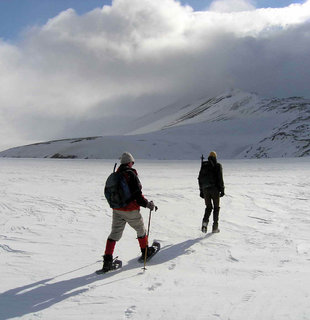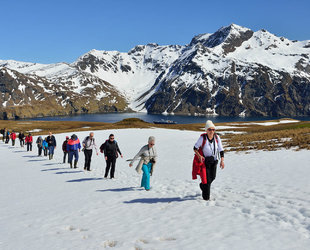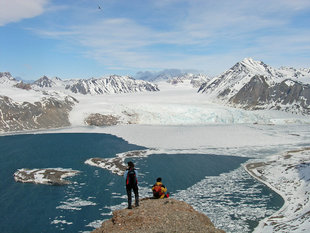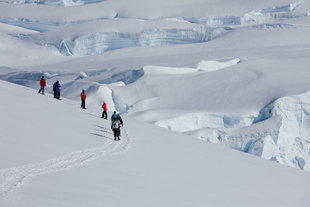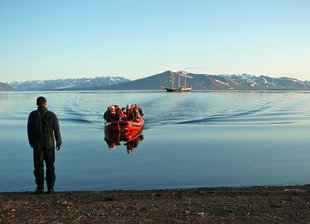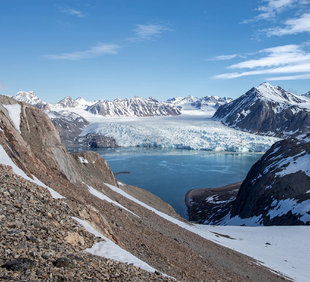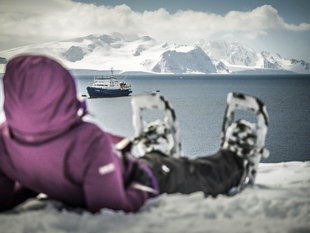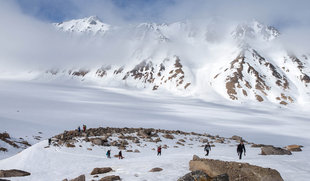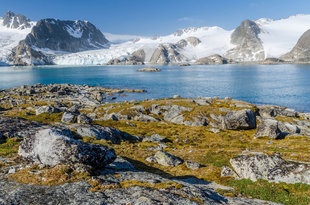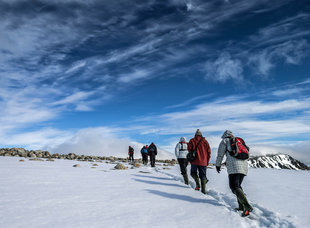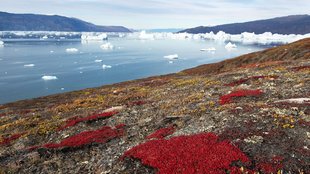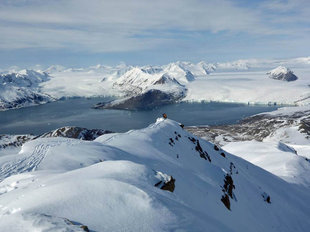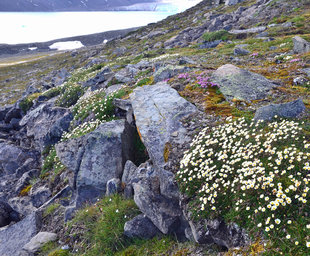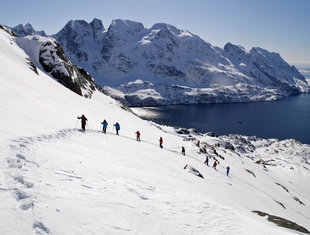Unless conditions or route preclude, snow hiking excursions will be available every full day of the expedition. You might go out for morning, afternoon and/or evening hikes of about 3 to 4 hours. There may also be a couple of day hikes of about 6 hours (walking time). On these day hikes a pack lunch will be taken.
How long are the hikes?
In the Arctic, hikes vary between 2 to 3 hours both in the morning and afternoon, or one 8 hour full day hike, on such occasions; passengers will take a packed-lunch with them.
In the Antarctica however, time on land is limited to 3 or 4 hours maximum, since the consumption of food and leaving toilet waste behind is prohibited (Antarctic Treaty/ IAATO regulations). Consequently, we generally plan to go ashore immediately after breakfast or lunch and aim to be back onboard the ship for the next meal.
How difficult are the walks?
In the Arctic there is often an option to join a less demanding hike. However, passengers are required to be fit enough to be able to participate in the more difficult and demanding hikes. Our guides can advise you which hikes will best suit you.
In Antarctica the hikes are generally quite easy for most people in a good, fit state of health. Passengers are required to be capable of participating in a 4 to 5 hour walk in fairly rugged terrain with some up and downhill walking, though no other special skills are required.
How fast do we walk?
Generally the walking speed is fairly slow and there are frequent stops. The lack of footpaths, loose rocks and snow demand a slow speed, but also many passengers like to take their time to enjoy the views and take photographs, which can also slow the pace down.
Do we walk as one big group or do we split up into smaller groups?
Yes, normally you will be split up into 2-3 smaller groups, with easy and more difficult hiking options available. Generally there are at least three guides onboard; therefore each group will have at least one guide. The more difficult hiking options often require more than one guide however.
If I bring hiking boots with me, do I have to carry the rubber boots in my pack during the walks? Or do those rubber boots (for the landings) stay with the inflatable and get returned at the end of the hike pick-up spot?
Normally rubber boots will stay on the landing / pick-up beach together with the life-jackets. Sometimes they are taken in the zodiac and delivered to the landing spot; therefore you do not have to carry your rubber boots with you.
Is it possible to take food on the hikes?
Eating in the Arctic field is allowed, however, due to the Antarctic Treaty / IAATO regulations, eating in Antarctica is forbidden to prevent the spreading of diseases and seeds of alien plant species.
Are the hikes optional? Can I stay behind onshore?
Passengers can of course stay onboard during a walk but they cannot stay behind on the beach. All the guides are needed for the hikes and passengers are according to the regulations not allowed to stay behind without being accompanied by a guide.
Is there a possibility to go to the toilet during the hikes?
In the Arctic, toilet visits are allowed. In Antarctica, no toilet visits possible on land (Antarctic Treaty/ IAATO regulations). If someone knows he/ she has a frequent need for a toilet then this person has to take a bottle (e.g. a Nalgene bottle with a wide opening, sold in outdoor shops or other field toilet options) with him/ her. Please note that field toilets are not carried on treks. One of the important things is not to drink too much before the walks, then during the walk only drink when feeling thirsty.
What kind of terrain can we expect?
Spitsbergen has virtually no hiking paths and comprises a wide range of different landscapes; from rugged, barren mountains and crevassed glaciers to extensive gentle tundra. Since glaciers are normally crevassed and dangerous we will not venture out on any.
In Antarctica, hikes are over fairly unknown terrain. Surfaces may at times be rocky, frozen, or covered in snow and mud. Since hikes are subject to weather conditions, it is often not until we reach the landing site that we can assess the difficulty of the walk.

